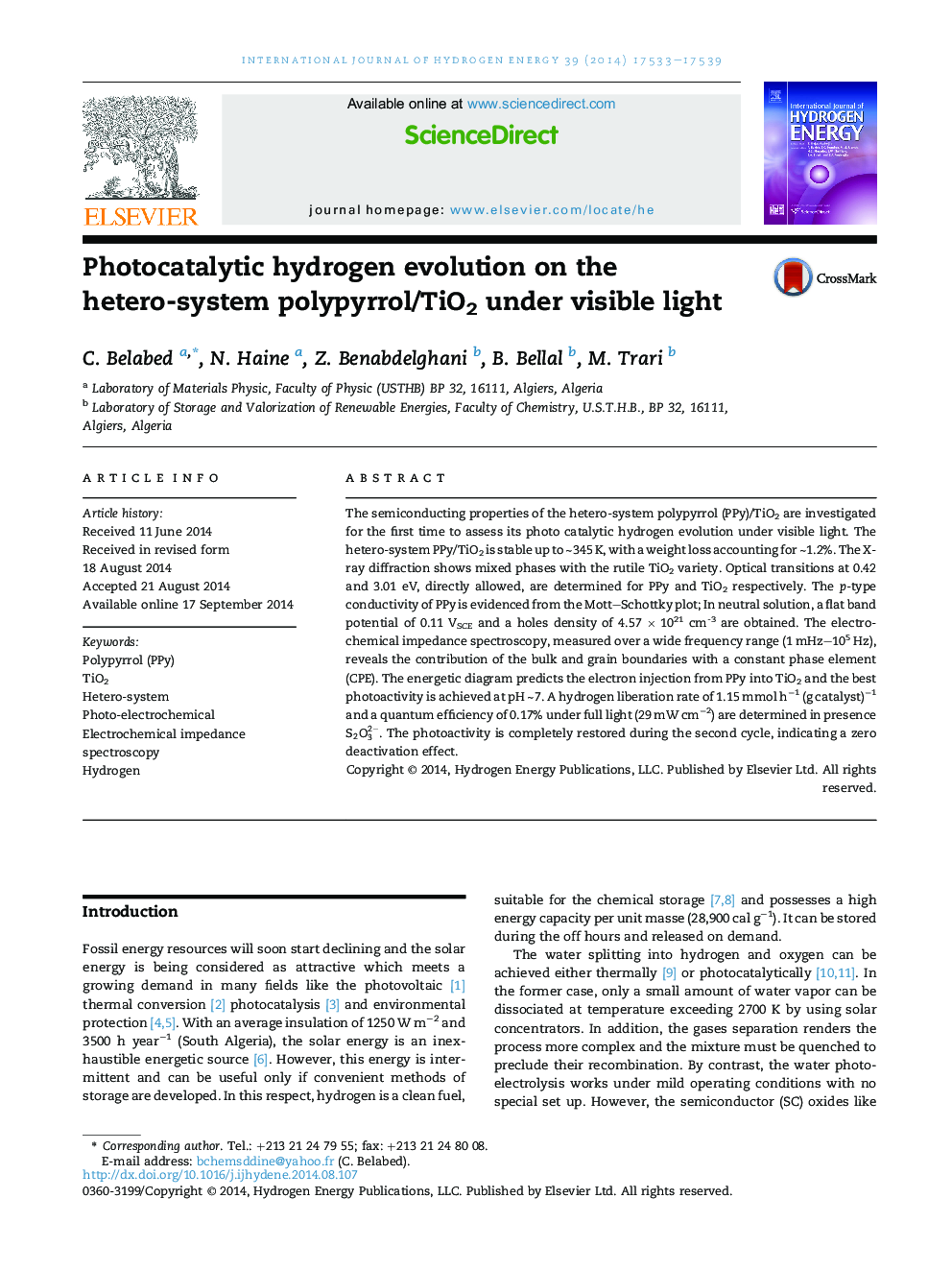| Article ID | Journal | Published Year | Pages | File Type |
|---|---|---|---|---|
| 1271849 | International Journal of Hydrogen Energy | 2014 | 7 Pages |
•The work deals with the hydrogen production on polypyrrole under visible light.•The energy diagram show the spontaneous hydrogen evolution.•The hydrogen evolution peaks at pH 6.8 with a rate of 1.15 mmol h−1 (g catalyst)−1.
The semiconducting properties of the hetero-system polypyrrol (PPy)/TiO2 are investigated for the first time to assess its photo catalytic hydrogen evolution under visible light. The hetero-system PPy/TiO2 is stable up to ∼345 K, with a weight loss accounting for ∼1.2%. The X-ray diffraction shows mixed phases with the rutile TiO2 variety. Optical transitions at 0.42 and 3.01 eV, directly allowed, are determined for PPy and TiO2 respectively. The p-type conductivity of PPy is evidenced from the Mott–Schottky plot; In neutral solution, a flat band potential of 0.11 VSCE and a holes density of 4.57 × 1021 cm-3 are obtained. The electrochemical impedance spectroscopy, measured over a wide frequency range (1 mHz–105 Hz), reveals the contribution of the bulk and grain boundaries with a constant phase element (CPE). The energetic diagram predicts the electron injection from PPy into TiO2 and the best photoactivity is achieved at pH ∼7. A hydrogen liberation rate of 1.15 mmol h−1 (g catalyst)−1 and a quantum efficiency of 0.17% under full light (29 mW cm−2) are determined in presence S2O32−. The photoactivity is completely restored during the second cycle, indicating a zero deactivation effect.
